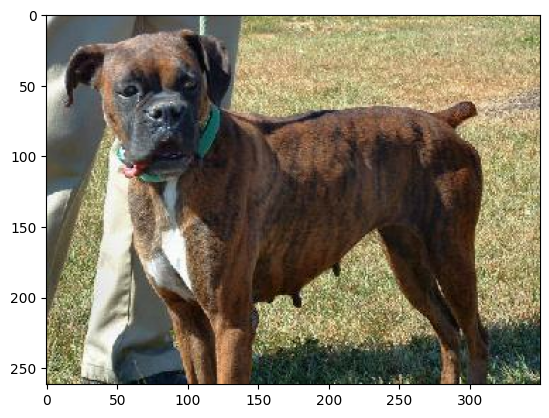Coursera
#@title Licensed under the Apache License, Version 2.0 (the "License");
# you may not use this file except in compliance with the License.
# You may obtain a copy of the License at
#
# https://www.apache.org/licenses/LICENSE-2.0
#
# Unless required by applicable law or agreed to in writing, software
# distributed under the License is distributed on an "AS IS" BASIS,
# WITHOUT WARRANTIES OR CONDITIONS OF ANY KIND, either express or implied.
# See the License for the specific language governing permissions and
# limitations under the License.
Copyright 2019 The TensorFlow Authors.
#@title Licensed under the Apache License, Version 2.0 (the "License");
# you may not use this file except in compliance with the License.
# You may obtain a copy of the License at
#
# https://www.apache.org/licenses/LICENSE-2.0
#
# Unless required by applicable law or agreed to in writing, software
# distributed under the License is distributed on an "AS IS" BASIS,
# WITHOUT WARRANTIES OR CONDITIONS OF ANY KIND, either express or implied.
# See the License for the specific language governing permissions and
# limitations under the License.
Transfer Learning with TensorFlow Hub
Now a days, large image classification models can easily have millions of parameters. Training such models from scratch requires a lot of data and a lot of computing power. Transfer learning is a technique that involves leaving the bulk of a model unchanged, while adding and retraining the final layers, in order to get a different set of possible outputs. Transfer learning can not only decrease your training time but can also increase your accuracy.
In this notebook, we’ll go over a very common scenario where we build a Keras model for classifying images of cats and dogs by using a pre-trained MobileNet feature vector from TensorFlow Hub. The feature vector can be optionally “fine-tuned” alongside the newly added classifier.
Setup
try:
%tensorflow_version 2.x
except:
pass
Colab only includes TensorFlow 2.x; %tensorflow_version has no effect.
import matplotlib.pyplot as plt
import tensorflow as tf
import tensorflow_hub as hub
import tensorflow_datasets as tfds
tfds.disable_progress_bar()
print("\u2022 Using TensorFlow Version:", tf.__version__)
• Using TensorFlow Version: 2.14.0
Download the Cats vs. Dogs Dataset
We will download the Cats vs. Dogs dataset using TensorFlow Datasets. We will use a training set, a validation set, and a test set. Since the Cats vs. Dogs dataset doesn’t have a validation or test split, we will create our own splits from the training set. We will use the first 80% for training, the next 10% for validation, and the last 10% for testing.
splits = ['train[:80%]', 'train[80%:90%]', 'train[90%:]']
splits, info = tfds.load('cats_vs_dogs', with_info=True, as_supervised=True, split=splits)
(train_examples, validation_examples, test_examples) = splits
Downloading and preparing dataset 786.68 MiB (download: 786.68 MiB, generated: Unknown size, total: 786.68 MiB) to /root/tensorflow_datasets/cats_vs_dogs/4.0.0...
WARNING:absl:1738 images were corrupted and were skipped
Dataset cats_vs_dogs downloaded and prepared to /root/tensorflow_datasets/cats_vs_dogs/4.0.0. Subsequent calls will reuse this data.
Explore the Data
Let’s take a moment to look at the data.
num_examples = info.splits['train'].num_examples
num_classes = info.features['label'].num_classes
print('The Dataset has a total of:')
print('\u2022 {:,} classes'.format(num_classes))
print('\u2022 {:,} images'.format(num_examples))
The Dataset has a total of:
• 2 classes
• 23,262 images
The labels are either 0 or 1, where 0 is a cat, and 1 is a dog. We will create a list with the corresponding class names, so that we can map labels to class names later on.
class_names = ['cat', 'dog']
Let’s see what one of the images looks like.
for image, label in train_examples.take(1):
image = image.numpy()
label = label.numpy()
plt.imshow(image)
plt.show()
print('The label of this image is:', label)
print('The class name of this image is:', class_names[label])

The label of this image is: 1
The class name of this image is: dog
Load the TensorFlow Hub Feature Vector
Below we can select the feature vector we want to use. The feature vector will be wrapped in a hub.KerasLayer.
model_selection = ("mobilenet_v2", 224, 1280) #@param ["(\"mobilenet_v2\", 224, 1280)", "(\"inception_v3\", 299, 2048)"] {type:"raw", allow-input: true}
handle_base, pixels, FV_SIZE = model_selection
IMAGE_SIZE = (pixels, pixels)
# if you are running the notebook on Colab
MODULE_HANDLE ="https://tfhub.dev/google/tf2-preview/{}/feature_vector/4".format(handle_base)
# # if you are running the notebook on your local machine
# MODULE_HANDLE ="./models/tf2-preview_mobilenet_v2_feature_vector_4".format(handle_base)
feature_extractor = hub.KerasLayer(MODULE_HANDLE,
input_shape=IMAGE_SIZE + (3,))
print("Using {} with input size {} and output dimension {}.".format(handle_base, IMAGE_SIZE, FV_SIZE))
Using mobilenet_v2 with input size (224, 224) and output dimension 1280.
Build Pipeline
def format_image(image, label):
image = tf.image.resize(image, IMAGE_SIZE) / 255.0
return image, label
BATCH_SIZE = 32
train_batches = train_examples.shuffle(num_examples // 4).map(format_image).batch(BATCH_SIZE).prefetch(1)
validation_batches = validation_examples.map(format_image).batch(BATCH_SIZE).prefetch(1)
test_batches = test_examples.map(format_image).batch(BATCH_SIZE)
Build the Model
Now we wrap the feature_extractor in a tf.keras.Sequential model, and add a new classification layer.
print("Building model with: ", MODULE_HANDLE, '\n')
model = tf.keras.Sequential([
feature_extractor,
tf.keras.layers.Dense(2, activation='softmax')
])
model.summary()
Building model with: https://tfhub.dev/google/tf2-preview/mobilenet_v2/feature_vector/4
Model: "sequential"
_________________________________________________________________
Layer (type) Output Shape Param #
=================================================================
keras_layer (KerasLayer) (None, 1280) 2257984
dense (Dense) (None, 2) 2562
=================================================================
Total params: 2260546 (8.62 MB)
Trainable params: 2562 (10.01 KB)
Non-trainable params: 2257984 (8.61 MB)
_________________________________________________________________
(Optional) Perform Fine Tuning
do_fine_tuning = False #@param {type:"boolean"}
if do_fine_tuning:
feature_extractor.trainable = True
else:
feature_extractor.trainable = False
Configure the Model for Training
If we choose to do fine-tuning, we will use an SGD optimizer, otherwise, we will use the adam optimizer.
if do_fine_tuning:
optimizer=tf.keras.optimizers.SGD(lr=0.002, momentum=0.9)
else:
optimizer = 'adam'
model.compile(optimizer=optimizer,
loss='sparse_categorical_crossentropy',
metrics=['accuracy'])
Train the Model
EPOCHS = 1
history = model.fit(train_batches,
epochs=EPOCHS,
validation_data=validation_batches)
582/582 [==============================] - 50s 57ms/step - loss: 0.0517 - accuracy: 0.9823 - val_loss: 0.0397 - val_accuracy: 0.9875
Evaluate the Model
We will now see how well our model performs on the testing set.
eval_results = model.evaluate(test_batches, verbose=0)
for metric, value in zip(model.metrics_names, eval_results):
print(metric + ': {:.4}'.format(value))
loss: 0.0285
accuracy: 0.9901